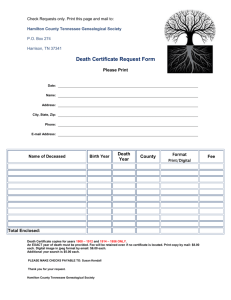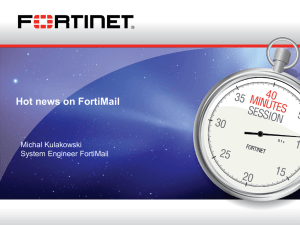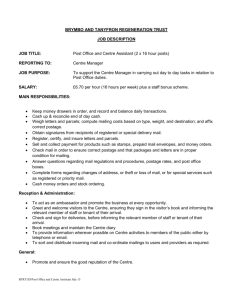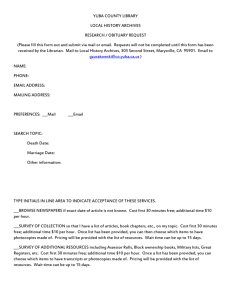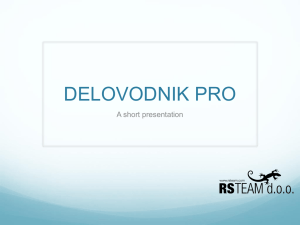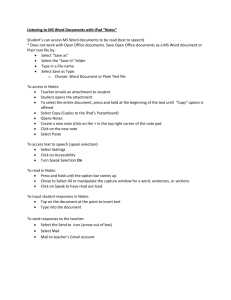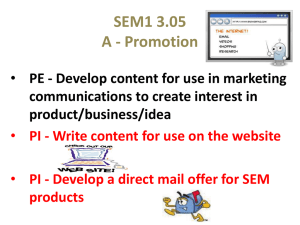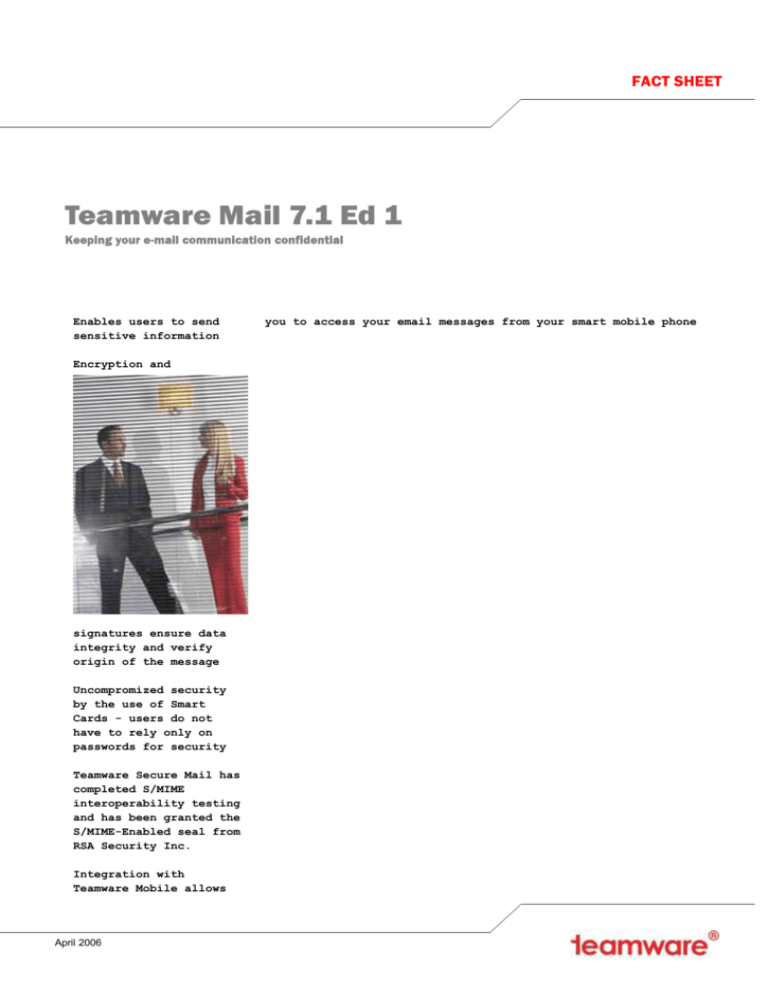
FACT SHEET
Teamware Mail 7.1 Ed 1
Keeping your e-mail communication confidential
Enables users to send
sensitive information
Encryption and
signatures ensure data
integrity and verify
origin of the message
Uncompromized security
by the use of Smart
Cards - users do not
have to rely only on
passwords for security
Teamware Secure Mail has
completed S/MIME
interoperability testing
and has been granted the
S/MIME-Enabled seal from
RSA Security Inc.
Integration with
Teamware Mobile allows
April 2006
you to access your email messages from your smart mobile phone
Digitally signed
and encrypted
mail
Teamware
Mail
is
an
intelligent
electronic
messaging
system
with
searches,
annotations,
reminders, custom views,
mailbox permissions, and
many more powerful features.
Teamware Mail supports both
the Internet and X.400
messaging environments as
well as fax integration and
working off-line. Mailboxes are
also accessible through the
use of standard Internet mail
clients via the POP3 and
IMAP4 protocols.
Teamware Mail enables users
to send digitally signed and/or
encrypted mail messages.
Teamware Mail is based on
the S/MIME standard and the
use of private and public keys.
With Mail you can securely
send confidential e-mail. You
can sign and/or encrypt your
messages
using
strong
algorithms and long keys.
Teamware
Mail
supports
smart
cards,
providing
uncompromized
security.
Support for LDAP certificate
directories enables you to
connect Teamware Mail into
an
existing
Public
Key
Infrastructure
(PKI).
Teamware
Mail
has
completed
S/MIME
interoperability testing and has
been granted the S/MIMEEnabled seal from RSA
Security Inc.
Mail is a part of the modular
Teamware
Office
Like the rest of Teamware
Office Mail supports use with
both a Windows client and
with
an
html-based
WebService
client
used
through a standard Web
browser.
.
Public key ideology
Teamware Mail encryption and signing is based on public/private key
technology. The idea behind this technology is that encryption/decryption is
always based on a pair of keys. One is available publicly and one is private
and held only by the owner.
The keys are mathematically bound to each other so that anything encrypted
with the public key can be decrypted only by using the private key of the
same key pair – and vice versa. In this way, a message encrypted using the
recipient’s public key can only be read by the recipient who has the
appropriate private key.
Teamware Office 6.1 and later supports integration with Teamware Mobile.
This integration provides advanced mobile access to Mail, Calendar, and
Personal Address Book (the last mentioned requires Teamware Office 7.0
Ed1 or later). More information on Teamware Mobile is available in
Teamware Mobile fact sheet and product overview.
More information on Teamware Office and its other components can be
found in separate fact sheets.
Teamware Mail
Teamware Mail provides each
user with a mailbox, which
enables sending and receiving
mail and attachments, and
creating folders and subfolders to
organize messages.
Users can get notifications of
received messages. Mail enables
searching for messages and
listing messages in various ways
both in online and offline mode.
Offline functionality allows users
to download messages from the
server,
read
and
prepare
messages offline and when back
connected to the server send the
messages.
How does Secure Mail
work?
Secure messages are created in
the same way as normal
messages. The user then selects
the sign and/or encrypt option. In
the case of signed messages the
users private key either from the
Smart Card or from the PKCS#12
file is used. The user must supply
the correct PIN code or
password. When messages are
encrypted, the recipient’s public
key is first obtained from the
LDAP Certificate directory.
When a user receives a signed
message, the message viewer
displays a security information
button.
Security
information
shows whether the message was
signed and/or encrypted, and
also the validity of the signature
and any related certificates.
If a received signed message is
also encrypted, a PIN code
(Smart Card) or a Password
(PKCS#12 file) is required to use
the private key to decrypt the
message
and
attachments.
Decryption is done in the
workstation. The message file in
the server is left unchanged. The
user can fetch and save the
attachment either in decrypted or
encrypted format.
Certificate Authority
support
A Certificate Authority (CA)
validates the user identity. They
may also make the actual Smart
Card and they also typically
provide an LDAP directory for
user certificates. The user
certificate binds the user name
and the related public key to each
other. LDAP address and search
information, used to fetch the
certificate
from
the
LDAP
directory, is stored in the
Teamware Directory. In cases
where a user may have several
different certificates, a list is
presented to allow selection of
the appropriate certificate.
When sending or reading a
secure message Teamware Mail
automatically
checks
the
certificate validity from the CRL
(Certificate
Revocation
List)
maintained by the Certificate
Authority. This is done by the
OCSP server (Open Certificate
Status Protocol).
In cases where the LDAP
directory is not available or the
recipient’s public key is otherwise
inaccessible, certificates can be
exchanged as mail attachments.
They can then be stored into a
local certificate cache for later
use.
Settings and algorithms
In the main message window, the
user can select the desired
www.teamware.com
Teamware®, Teamware OfficeTeamware Mobile, Teamware Mobile Express and other Teamware product and service names are
trademarks of Teamware Group Oy. Rights to other trademarks reside with their respective owners. Copyright Teamware Group Oy 2004. All
rights reserved. Teamware cannot accept any liability for any contents in this document and the information is subject to change without notice.
This document does not form part of a contract or license unless expressly agreed.
For further information contact:
Teamware Group P.O.BOX 135, FIN-00381 Helsinki Finland.
Telephone: +358 (0)207 515 300 Fax: + 358 9 547 2965
security options. The choices are
normal and non-repudiation sign
and/or encrypt. Non-repudiation
sign means that the sender of the
message cannot deny being the
actual sender.
Authentication
RSA (4096 bit)
Signature
SHA-1, MD5, MD4, MD2
Encryption
Blowfish (256 bit), Triple-DES
(168 bit), DESX (120 bit),
DES2 (112 bit), DES (56 bit),
RC2 (40 bit)
Support for Smart Cards
The private key is the proof of
identity and is securely stored in a
Smart Card. Some Smart Cards
contain two certificates with
corresponding PIN codes – one
is used for message integrity
signing and decryption and the
other is used for non-repudiation
signing. The first PIN code is
valid as long as the card is in the
card reader, whereas the PIN
code for non-repudiation has to
be entered again each time a
signature is made. Teamware
Mail supports PKCS#11v2.11 API
based Smart Card readers.
Cardless functionality
The cardless version of Mail uses
certificates stored in PKCS#12
files. These X.509 certificates
and private keys have passwordbased access control.
Technical specification
Teamware Mail security features
require:
User Certificates
Smart Card and a reader
(optional)
SetWeb 1.5 (required with
smart card readers)
Teamware Office 7.1 Ed 1 or
later
OCSP server.
The
SMTP/MIME
connector
should be installed.
See Teamware Office 7.1 Ed 1
fact sheet for the description of
other technical details.
.

